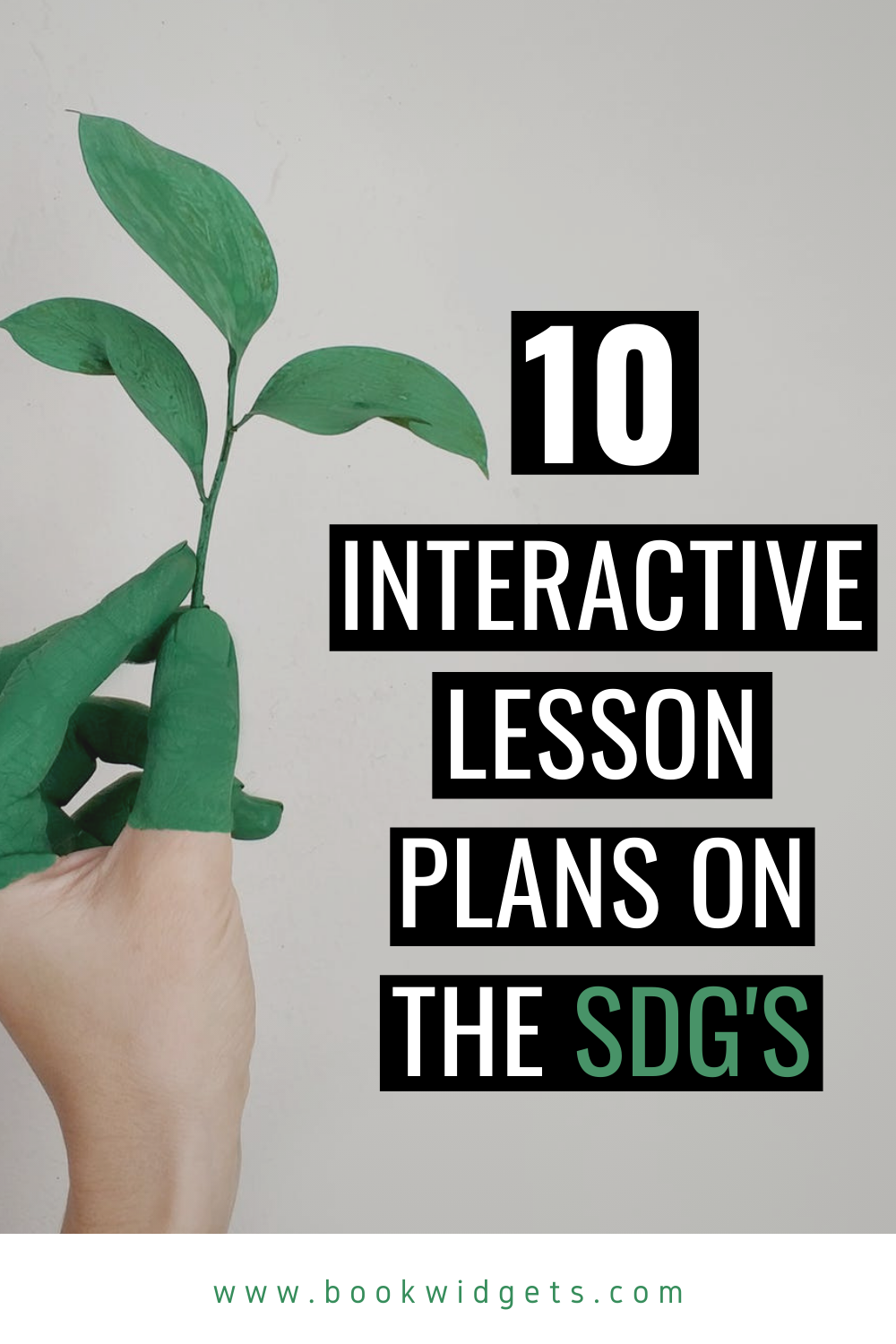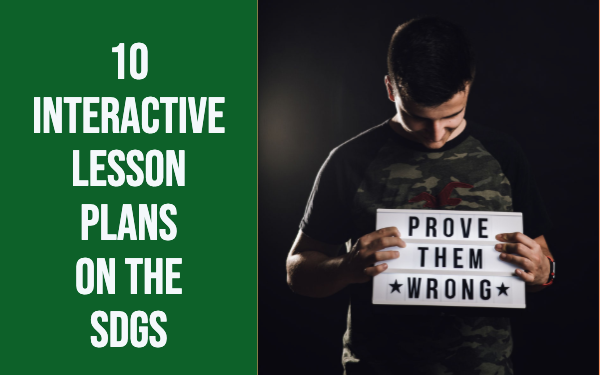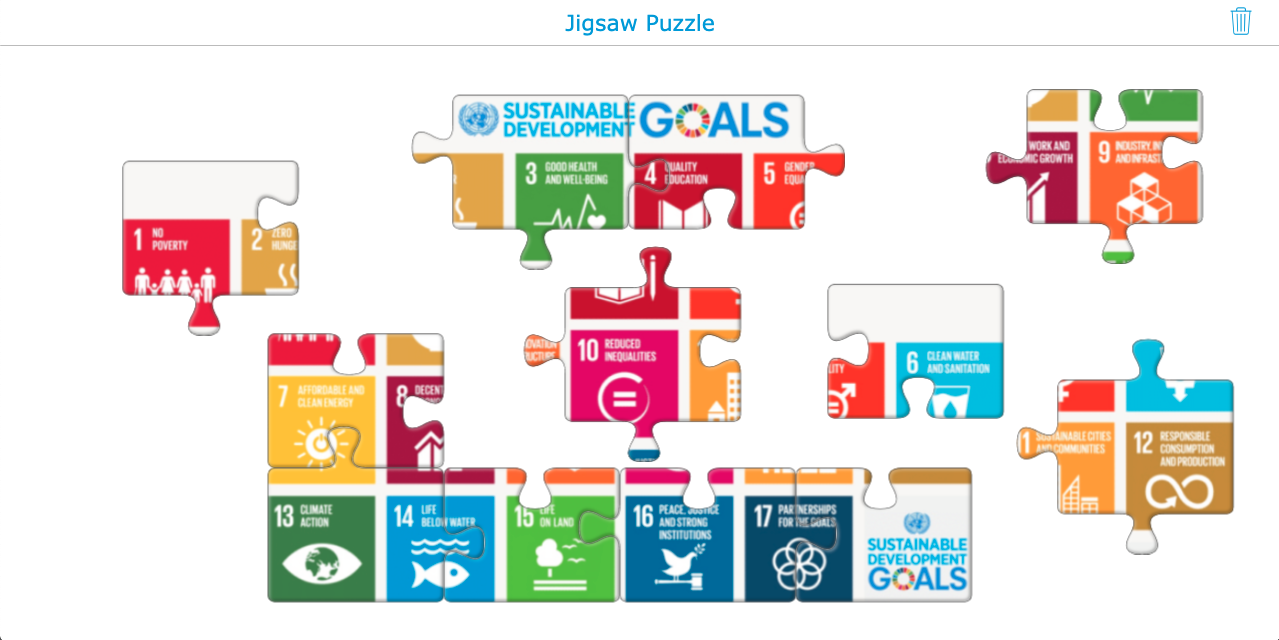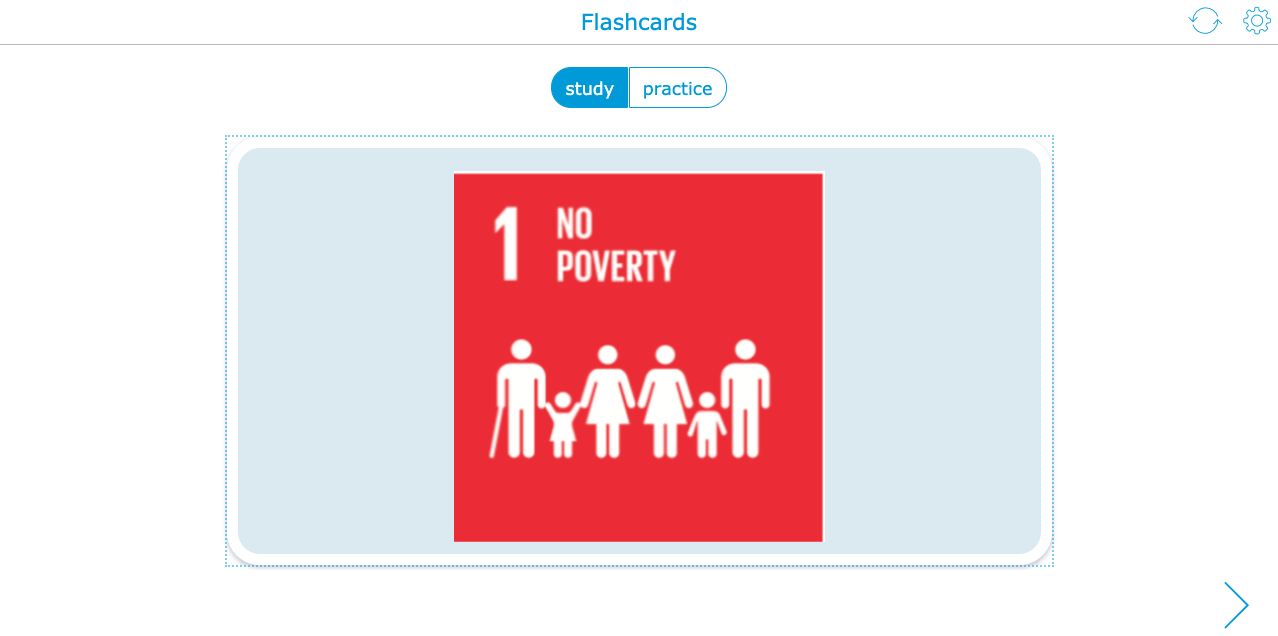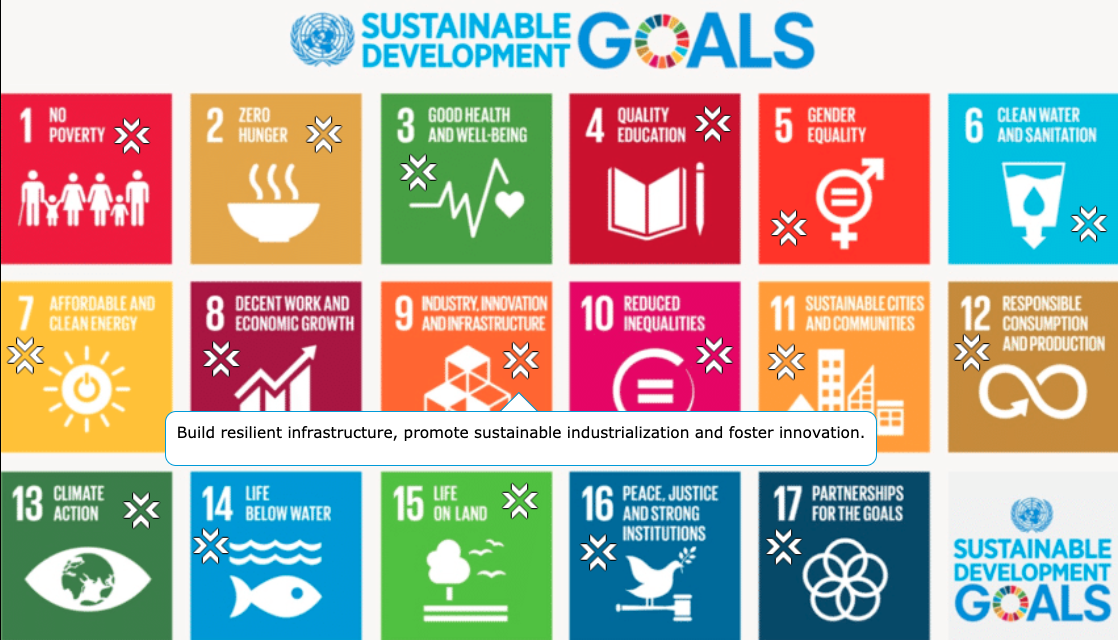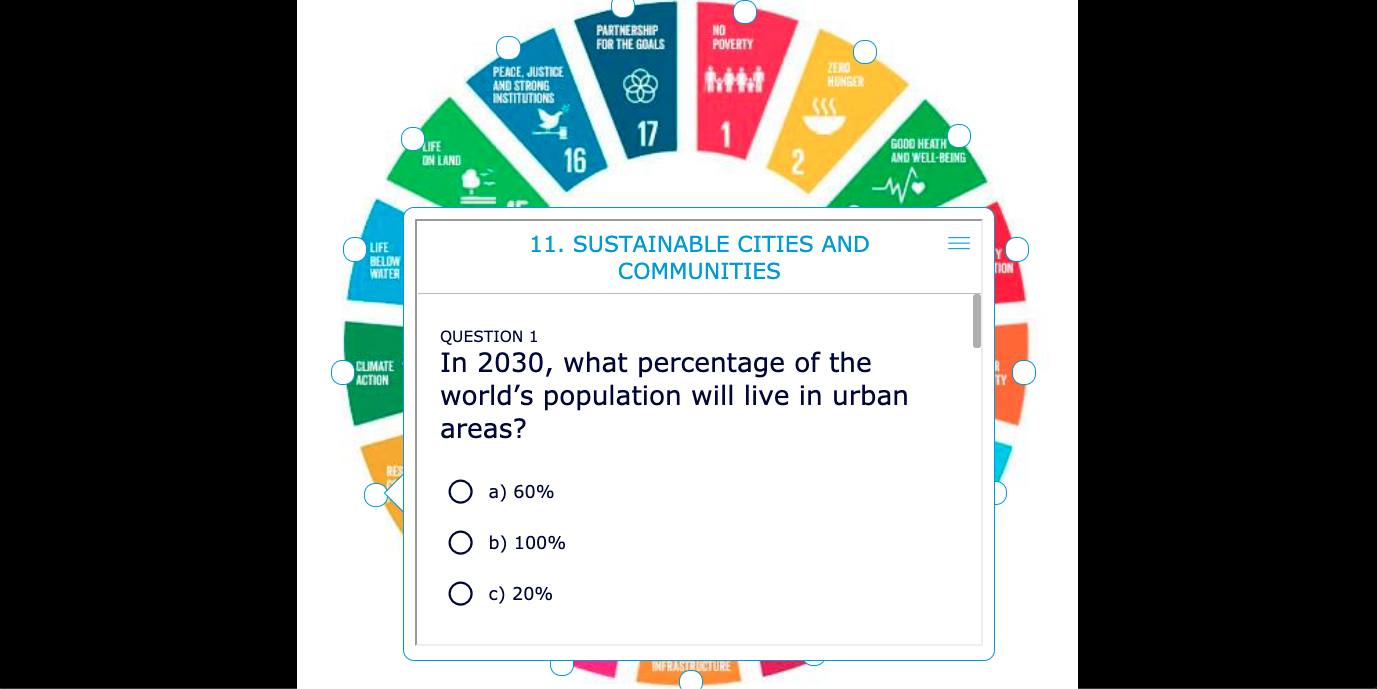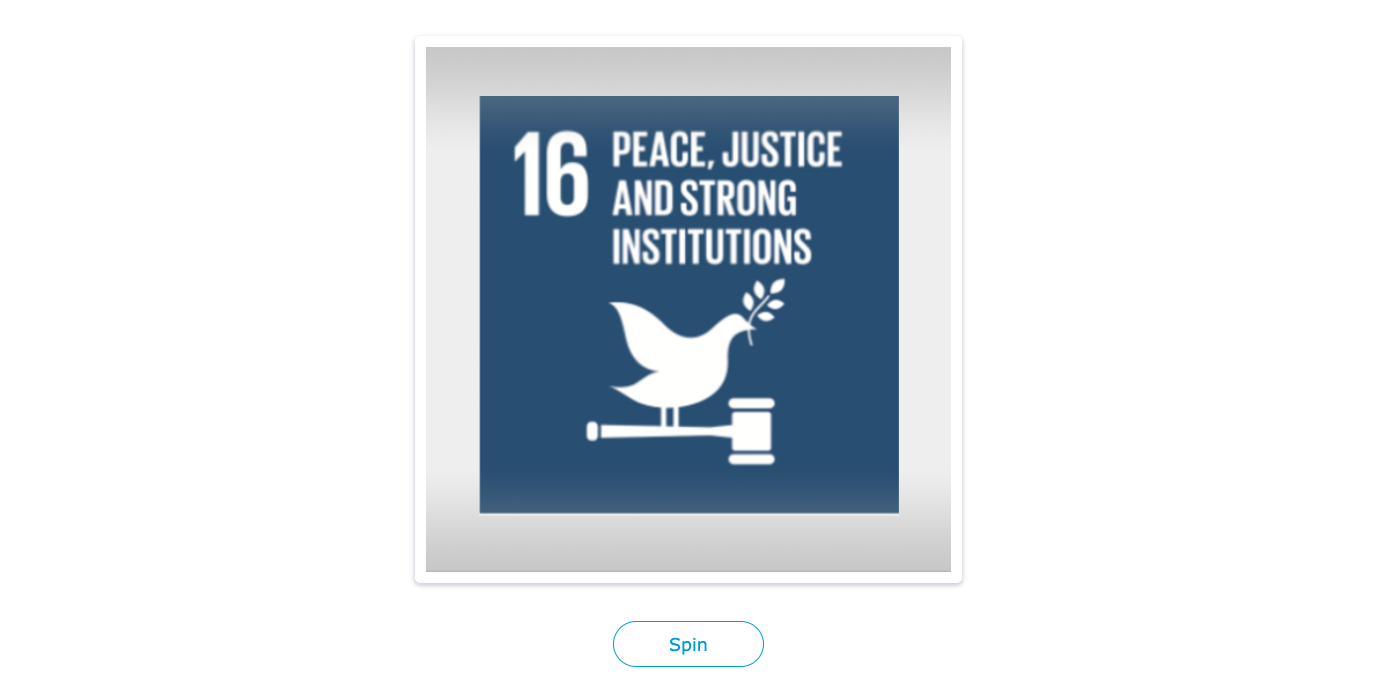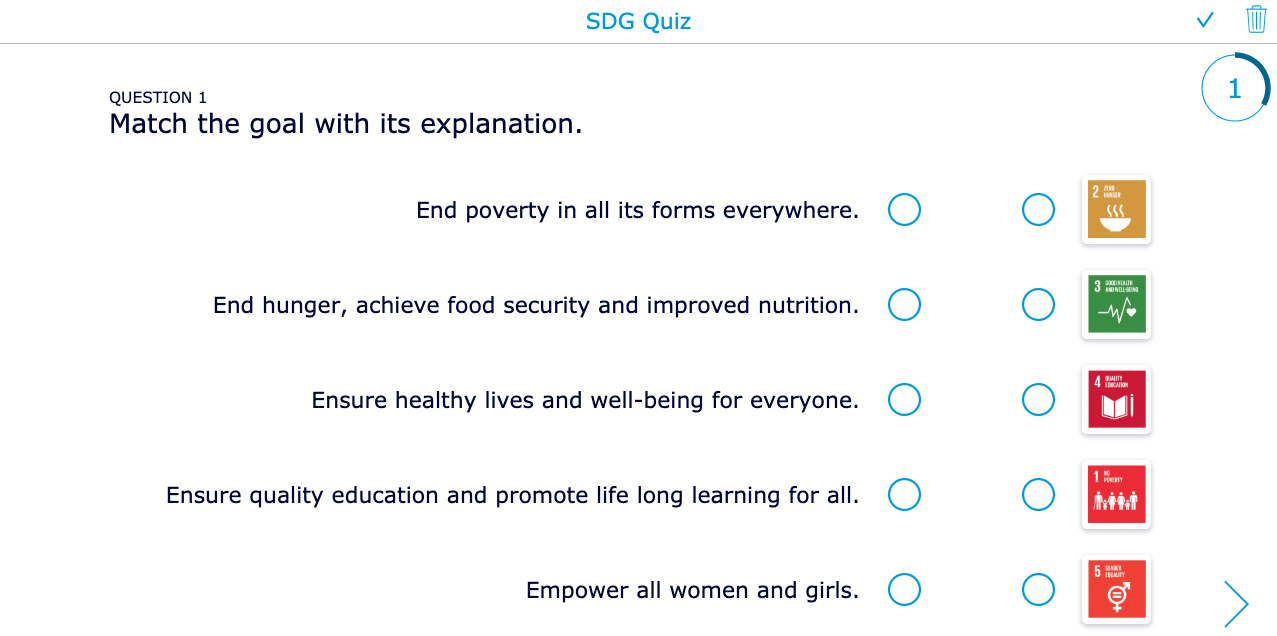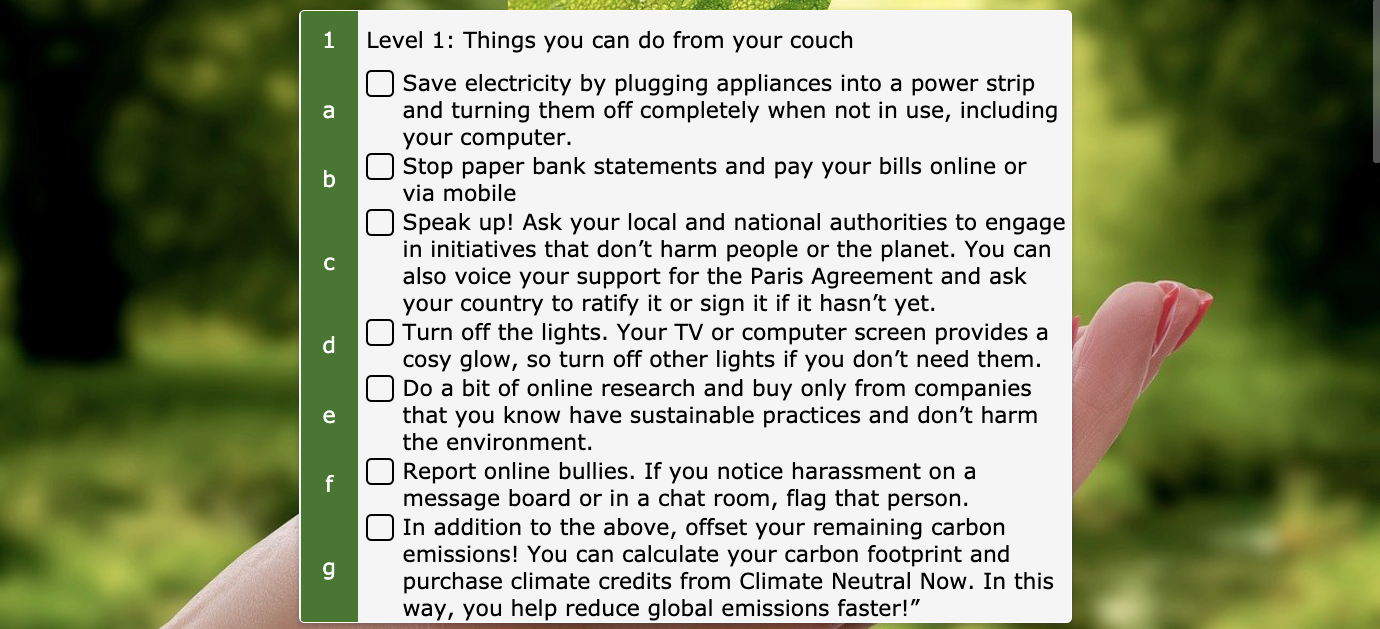10 Ready-to-use Lesson Plans on the Sustainable Development Goals
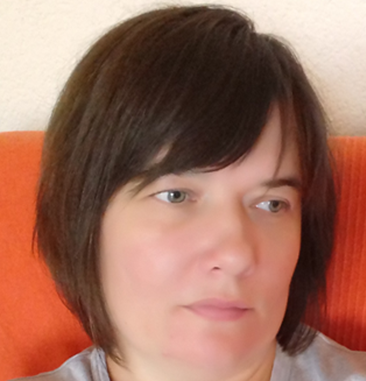 Božica Borbaš —
Božica Borbaš —
The United Nations introduced the Sustainable Development Goals (SDG’s) in 2015 as a global plan to reduce poverty, protect nature and enable everyone to live in peace and prosperity. But what would a sustainable world look like? This short video introduces these 17 SDGs:
These 17 goals of sustainable development should be achieved by the year 2030. That’s just 10 years from now. To achieve the goals, countries, companies, and citizens should all work together, and share the responsibility to spread the word about them. It’s therefore crucial to introduce SDGs to students as well.
If you never heard of them before, it’s time to take action! Being aware of the challenges this world holds is the first step. That’s why I made some interactive and ready-to-use lesson plans about SDGs. Just copy the link and share the activities with your students. We have 20 more digitale lesson activities that touch certain parts of the SDG’s. Go check out our awareness days widgets to find ready-to-use lesson plans.
10 Lesson activities on the SDG’s
1. Video
Start with the video you just saw, and show it to your students. This way, your students immediately know the meaning of a ‘SDG’ and what you’re talking about. From here, you can start digging your way through all the SDGs.
2. Jigsaw puzzle
Let your students solve the jigsaw puzzle. When finished, give them a few minutes to check out all the SDGs.
3. Flashcards
This flashcards exercise gives your students a clearer view of what particular goals mean. Use this exercise to drill the goals so your students will never forget them. Of course, these are just the basics, and you can dig deeper on every goal. For example, what does it really mean to “Ensure sustainable management of water and sanitation for all.” What actions need to be taken in order to achieve this goal?
4. Hotspot image
If you’re not a fan of flashcards, you can always use this hotspot image and let your students discover the true meaning of all the SDGs. Same content, different format. What also might help is to give some sustainable development examples to your students so that they understand the context better.
5. Classroom discussion
Pull the SDGs in a classroom discussion. Gather around in a circle, and ask your students to find a small object that represents them. Put a bottle (or other tall object) in the middle of the circle, and staring bringing out the different sustainable development goals. Students now have to place their objects in the area before them. They can place it in front of their feet, or place it next to the bottle in the middle. They can also place it somewhere in between.
The place of their object defines the importance of the SDG for that particular student. It doesn’t matter which one they choose, whether it’s quality education or the importance of the climate. The closer the object to the bottle in the middle, the more this goal means to them. Ask them why they feel this goal is more important than the other goals. Of course, these are all subjective opinions, so don’t judge your students for their opinions, but ask them to elaborate on their statement.
6. Go Goals - Board Game
Go goals is a ready-to-use board game that helps children understand the Sustainable Development Goals, and how each of us can contribute to realizing the goals.
Unfortunately, as interesting and useful as this game may be, it requires a lot of paper and toner, since you need a kit for every group of students. That’s why I made a digital version of this game in the next resource instead.
7. Go Goals - Digital game
This digital board game contains the same questions as the original paper board game. Just click on the little white circle to get the questions about a certain goal.
For yet another version of this game, check out the next resource.
8. Go Goals - Combined version
This version uses one set of original cards, and a digital randomness widget. In this version, you have to print the cards and arrange them according to the numbers. Students take their turn spinning the wheel and answer the question about a selected goal.
9. Quiz
Finally, use this quiz to check your students’ knowledge about SDG’s.
10. Take action! The Lazy Person guide
When all your students succeed in the quiz, think about setting up your own project. Help to achieve one of the Sustainable Development Goals on the list by taking action yourself! Check out how you and your students can help by just doing simple things. This checklist will make your students think about the decisions they make at home or in school. Stimulate them to step up and use their voice to empower their parents and family as well and to show them the importance of sustainable development. Ask your students to tick off the steps they’ve already taken. Ask them to do it again at the end of this year.
Would you like to see additional lessen activities on SDG? Check out this blog post.
Wrap up
That’s it! I really hope you can use these SDG lesson materials in your classroom. Of course, there are many more resources on teaching SDGs.
Share your own ideas in the Teaching with BookWidgets Facebook group. Also, don’t forget to follow BookWidgets on Twitter to stay up to date on all new blog posts!
Author Bio
Božica Borbaš is a Croatian math teacher and an enthusiastic BookWidgets user.
